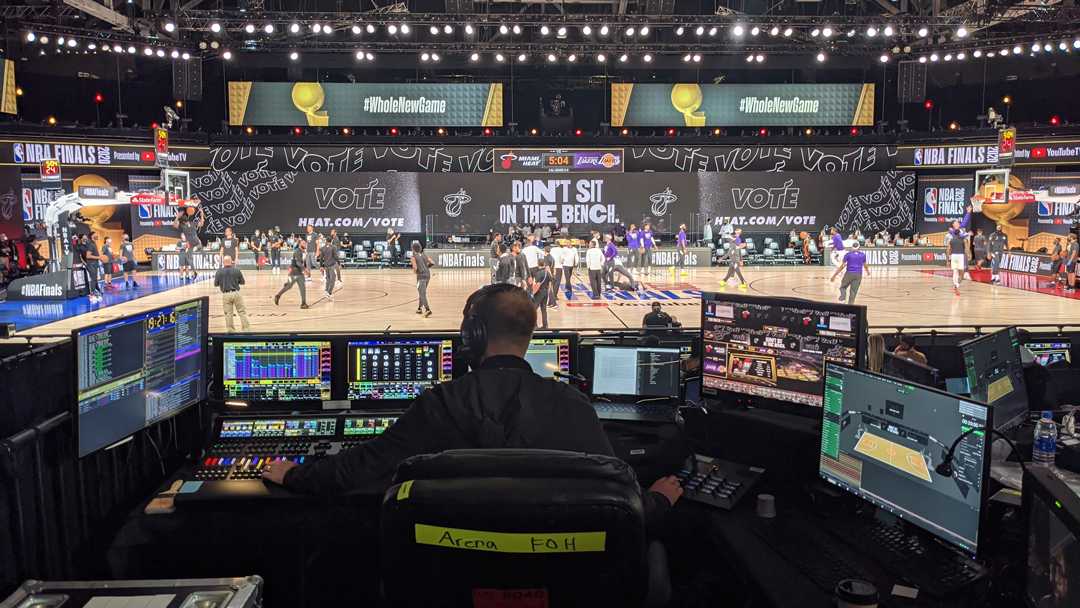MA lighting consoles score in NBA restart
- Details

Fuse Technical Group, which supplied all the court video systems, provided four programmers with an arsenal of grandMA hardware to play back and trigger various assets and effects during the games: five grandMA3 full-size units with one MA NPU (Network Processing Unit) plus two grandMA2 full-size and one grandMA2 light consoles, the latter as backup systems and the tech desk.
Three basketball courts were created in the sports complex with giant, wraparound LED video screens topped by graphics displays. A pre-recorded national anthem as well as player intros were displayed on the massive screens before the start of games and virtual fans were shown enjoying and reacting to game play. To customise the courts for the designated home team, a database of music, audio cues and graphics that the teams would ordinarily use in their home arenas was used – with the dynamic audio and video elements building in intensity as the playoffs progressed.
“The NBA wanted to create an interesting on-camera experience that would engage as many fans as possible. The solution they arrived at was to line the courts with a U-shaped LED arrangement,” says programmer Jeremy Lechterman, principal of FragmentNine, a live event creative direction company. “That high-resolution element was primarily used to display team content and the virtual fans while a low-res ribbon element was hung above to simulate traditional in-arena video.”
The grandMA3s were programmed to integrate with 13 disguise gx 2c media servers, which handled the teams’ screens content, and a Barco E2 system, which switched the virtual fans, the disguise team content, stats, and the program cut from broadcast.
“During the seeding games, which were an extension of the regular season, all three courts were running concurrently with up to seven games a day,” notes programmer Michael “Hank” Hankowsky.
“This was the first time any of us [programmers] had done sports and the first time this format was used,” Lechterman points out. He and Hankowsky were joined in the bubble by programmers Jackson Gallagher and Charles Dabezies.
“The grandMA3 is not the system typically used in these teams’ home arenas to handle video,” Lechterman points out. “None of the usual in-arena systems could be used in the bubble where we needed to serve up content for 22 teams and have multiple simultaneous users. Without the grandMA3 there wouldn’t have been a solution.”
Lechterman says that ACT Lighting provided “A+ level support all around” for the NBA’s resumed season. “The first couple of weeks I’d call ACT’s software support manager Ryan Kanarek for gut checks that what we were doing was okay and to get help with any head scratchers,” he recalls. “We got some pretty in depth macros to make it all work seamlessly; even MA Lighting’s German headquarters contributed. Also, special thanks to Philip Norfolk at UK-based Ambersphere Solutions for his grandMA3 support.”
For more information about NBA Restart, read Richard Cadena's two-part series in Technology Focus, LSi September and October 2020.
















